- Home
- Lawrence Block
Alive in Shape and Color Page 8
Alive in Shape and Color Read online
Page 8
He cocked his head and squinted. “My God, look.” He took a mechanical pencil and circled what he stared at. It was a minuscule blue line, representing a creek, running from some rocky hills to another tributary that ran eventually into the Dordogne.
And the creek had a name.
Le Loue.
Pronounced in French exactly the same as Loup.
“That’s what the boy told Hall. He misheard the word.”
Della said, “It’s only about fifteen miles from here.”
They stared into each other’s eyes. Roger said, “What do you say about a day in the country tomorrow?”
“I can’t think of anything I’d rather do.”
Monday morning, they took a taxi from the hotel into a small village near Loue Creek.
They found a scruffy but quaint inn, squatting in a lot filled with enthusiastic grass and weeds, close to the narrow road. Its name was L’Écureuil Roux.
The Red Squirrel.
Sounded more like a British pub than a French country inn.
Roger asked for a room and the manager hemmed and hawed, though it was clear the place was virtually empty. He grudgingly took their credit card after saying that he preferred cash and cocked his head, gazing in anticipation. They took their bags to the room and returned to the lobby with their trekking backpack. They asked to borrow two bicycles for a ride into the country. He’d seen several bikes sitting in the tall grass behind the garage.
Twenty euros later—the rental fee—and he and Della were cycling in the direction of Loue Creek.
The lazy stream was situated in a shallow valley of rock cliff faces on one side and grasses, flowering trees and lavender, on the other. The road was on the rocky side, and they biked along the road paralleling it, seeing hardly a single person. A few old Peugeots and Toyotas cruised past, oblivious to the bikers. They stopped at every rock outcropping that might support a cave, but the only possibilities were mere fissures in the limestone, too narrow to fit through.
Della braked to a stop and looked around the rolling scenery. “Sun’ll be down soon.”
They were some miles from the hotel. But Roger was still feeling the excitement of the hunt. “Just one more. Over there.” He pointed to large crescent of stone that jutted off the road, thirty feet above the creek, covered with rocks, boulders, and gravel. Leaving the bikes at the top, they made their way to the base of the cliff face. At first, Roger was skeptical, thinking that the place was too near both the road and the waterway; surely a hiker or a boater would have discovered a cave long ago. But he saw at once that covering a view of the base of the outcropping was a thick tangle of brush and branches. They donned leather gloves and started to clear it away.
“Look!” he said, staring at what they’d revealed: a tunnel, three by four feet around, extending about a yard into the rocky interior, which was blocked by a pile of gravel and dirt. Roger crawled forward on his hands and knees and cleared away enough debris that there was so he had opened an eight-inch gap at the top.
Behind: blackness, from which issued damp, musty air.
A cave.
“Oh, honey!” Della joined him, getting as close as she could into the narrow opening. She handed him a flashlight and he clicked it on, then aimed the beam into the opening.
“My God. Yes!”
You couldn’t see much of the cave from this angle through the tiny opening, but there was no doubt that Roger was looking at a portion of a cave painting. A horse, he believed.
“Take a look.”
They changed position, and she too examined the walls. “Oh, Roger. I can’t believe it!” She scooted higher on the pile of gravel. “I can’t see in any farther.” She played the light on the sliver of the painting.
They backed out and studied the obstructing pile of stone and gravel. He said, “I’d guess an hour or so to clear enough so we can get inside. It’s too late to do anything more now. We’ll come back in the morning.”
He put his arms around her, kissed her hard.
A significant find . . .
At last.
Though, of course, there was one more matter to be addressed.
“It’s a crisis of conscience. Pure and simple. What are we going to do?”
“I’m not sure. I’m really at a loss,” Della was saying.
Now, Monday night, they were in the lounge of the inn, debating.
Stretching till a bone popped, he said, “There are two sides to it. You know, one says do the right thing. But it’s not as easy as that.”
“And sometimes you have to choose what looks like the wrong thing, if it’s for the greater good.”
“Do you think that’s what we should do?”
They were interrupted by the innkeeper, a smirky, condescending smile on his face. “Is there something else you’d like? Another bottle of wine? Whiskey? Food?”
The shifty guy, always trying to make an extra buck.
“Non, merci.”
The man pouted and didn’t leave until Della said, “Bonne nuit.”
Roger waited until the man was gone and then mused, “Doing the right thing.”
As with many dilemmas, their crisis of conscience was quite simple: Whether or not to give Trevor Hall credit.
For his Carter Moment, his significant find.
Roger remembered the man’s morose expression when he said that he hadn’t had any great discoveries.
Maybe I never will. Oh, well . . .
Then her voice grew soft. “We haven’t even published for a year, honey.”
It had been a dry spell for their career recently. And the trips to Europe for digs and conferences were paid for largely by the couple themselves; the travel expenses provided by the university were minuscule. They’d just moved into a larger house, and the mortgage payments were quite the burden.
The discovery of a new decorated cave would make huge difference in their lives.
After a moment she asked softly, “Would Hall even know?” She shook her head. “Sorry. I shouldn’t have said that.”
Roger shrugged. “I introduced myself. He’d find out.”
Crises of conscience can rarely be sidestepped.
They fell silent, the room filling with ambient noise—a creak from upstairs, an owl in the distance, the staccato snap of the licking flames.
Roger explained his thoughts: This was the real world. If Hall had the mettle to stick it out, he probably would have found the cave. If he’d thought more cleverly—like he and Della did—he would have found the cave.
She added, “And he didn’t need to give you any information. If he was that concerned about getting credit he could have kept quiet and come back again.”
“True. You’re right. And, dammit, if it wasn’t for us, there’d never be a discovery in the first place.”
And yet Hall’s face had seemed so wistful.
Include him or not?
Crisis of conscience . . .
And as with most such predicaments, the solution was easy and comforting.
Kick the can down the road.
“Let’s decide in the morning.”
“I think that’s best,” she said.
He kissed her shampoo-fragrant hair and they climbed the creaky stairs to their room.
Roger awoke at six thirty, Tuesday morning, filled with intense energy.
He roused Della and, for a change was not moved to begin caressing and kissing, as often in the morning. He rolled quickly from the bed and showered, not bothering to shave. She too arose, showered and dressed quickly. They dressed in jeans, T-shirts, sweats, and jackets; even shallow caves could be quite chilly. On their feet were comfortable hiking boots.
Into the backpack, Roger placed the folding shovel, gloves, the camera, flashlights, a sketchpad, and pens, and energy bars and bottles of water.
In ten minutes—having had only coffee for breakfast—they were bicycling down the road, under an overcast sky. Soon they arrived at the cave.
Roger
half expected to find it jammed with other archaeologists, or at least guarded by Trevor Hall. But, no, the place was deserted.
They left the bikes at the top of the outcropping, wove through the piles of loose stone and gravel, and made their way down the steep hill. Using the short camping shovel, Roger had cleared enough debris to allow them access.
Breathing fast from the exertion—and the excitement—he turned to his wife. “Ready?”
“Let’s do it.”
With some effort, they slipped through the gap and into the cave.
It was about thirty feet long, twenty wide, and ten high. The floor was flat—limestone, as most of them here—without standing water or pits. The ceiling was intact. These were instinctive observations—for safety—and once satisfied the place was structurally sound, they turned to the wall containing the fragment of image Roger had seen yesterday. It contained dozens of paintings.
“Oh my God,” Della whispered.
Roger was unable to speak.
He had never seen any cave paintings this brilliant and well-defined. It was as if the chamber had been hermetically sealed since their creation and no moisture or gasses had entered to bleach or damage the art.
She gripped his arm.
The style was clearly Paleolithic, similar to that of the paintings at Lascaux: the figures were rendered in dark outline and filled in with red, beige, and sienna colorings. There were a number of animals, mostly cattle and a few horses. Curiously, though the diet of the tribes in this region was primarily reindeer—the piles of bones told this story—there were no depictions of this creature, either at Lascaux or here.
What was most astonishing, however, were not the animals but a series of paintings of humans in the middle of the wall.
This took Roger’s breath away.
Della could only stare in shock.
Human figures were rare in Lascaux and other Upper Paleolithic caverns in this area, and when they did appear, they were rendered as stick figures. Anthropologists believed that this was due to some taboos or primitive religion proscriptions against representing humans.
But here the pictures of people were as carefully done as the animals: outlined and then filled in. These would be Homo sapiens, anatomically similar to humans today (as opposed to Neanderthal and Homo erectus, humanlike species that died out before the cave-painting years of the Upper Paleolithic era). The artist (presumably male, though not necessarily) was primitive stylistically but had made an attempt at perspective and three-dimensional representation. They had crudely drawn facial features and wore clothing that was baggy and brown, hides presumably.
Roger whispered, “This might be the first attempts to authentically represent humans.”
“Maybe we’ve found a new tribe altogether.”
He nodded. “Drawing humans like this means maybe they’d discarded at least one primitive taboo. God, we could be looking at a radical step forward in behavioral modernity.”
This was the developmental state that set Homo sapiens apart from earlier and nonhuman species: the ability to think abstractly, create art, make and execute plans and engage in symbolic acts. These paintings suggested that perhaps behavior modernity might have been achieved earlier than believed, among some tribes at least.
“This is it,” Roger said, choked with emotion.
A significant find. . . .
Which begged the question that had been consuming them both.
They looked at each other and she nodded. “We tell him. Trevor Hall.”
Roger smiled. “We have to, yes.”
She grinned as well.
Do the right thing.
The crisis of conscience had been resolved.
Roger felt in his gut a swelling relief.
And, hell, they’d get some credit. After all, the Fannings were the ones first into the cave. But they’d share the find equally with Hall, write the paper together, appear at the press conference together. Their success would be diminished some, but they could sleep at night.
“Let’s get some pictures and get back to the hotel. I don’t have Hall’s number, but I know he’s from Seattle. We’ll find him.”
“Roger? Shine the light here.”
He swept the beam past her and the illumination splayed over the mottled gray wall. The image she was pointing at was in the center, where the humans and animals were depicted together. She indicated a man standing beside a dozen cattle. At his feet was a crude image of a black cat. The Upper Paleolithic era had its share of lions and leopards and other big cats in this region. The animals we know as house cats existed but were far more common in Northern Africa than in Europe.
“And, my God, Roger . . . Look at the cattle!”
He understood, and whispered, “They’re domesticated.”
Domestication of what we know as farm animals—raising and slaughtering them, rather than hunting—was just beginning around this era. But nearly all the Lascaux and other cave paintings around this time in prehistory, depicted animals being hunted; these were clustered in what seemed to be a herd. The man, near whom the cat was standing, seemed to be looking over the creatures. He had a full beard and was balding.
“A cowherd?” Roger asked.
“It might be. Astonishing to find organized animal farming that long ago. This is a first too.”
“And look to the right,” Roger said.
Della played her flashlight beam over the images adjacent to the cowherd. It depicted him once again but this time standing with a woman, with long straight hair. The cat was at their feet.
“A depiction of what might be a domestic union.”
“Look, Roger—the paintings’re to be sequential. They’re telling a story, like panels of a cartoon.”
More evidence of advanced behavioral modernity at a surprisingly early era.
They turned to the next painting in the sequence.
This showed the woman from the second panel, with the long hair, now standing beside a third figure—a clean-shaven man. The balding, bearded man stood by himself, some distance away, the cat still at his feet.
Roger and Della moved farther to the right and looked at the final painting in the center panel. It showed the balding man, along with the cat, standing on a small hill, alone.
“Something’s odd,” Della said. Frowning, she walked close and touched the picture.
“Honey!” Roger whispered urgently. You should never touch anything painted at an archaeological site with unprotected fingers; oils can ruin the fragile works. This was one of the first rules of archaeology.
Her face alarmed, she turned to her husband. “What do you think these were painted with?”
“Charcoal, pigments?
“No, take a close look.”
Roger walked up and removed from the backpack a folding magnifying glass. He leaned close and examined the image of the bearded man and hillock of earth he stood on. He shook his head and sighed. “Goddamnit.”
“A hoax,” she asked.
He nodded. “It’s acrylic. Probably done in the last year or so.”
“Somebody’s having a laugh.”
There was a long history of fake archaeological finds—the Cardiff Giant, the Michigan relics, the Piltdown Man. Some were done for profit, some to boost an explorer’s prestige, some simple pranks.
“So close,” Roger said, sighing.
Della shook her head and laughed, gazing at the picture. “Funny. We used to have a black cat.”
“Really?” Roger asked absently. He was getting the camera out to take pictures. He’d send them to Trevor and report what the find had turned out to be.
“Fred, my ex, and I did, around the time I went back to school.”
“Cat, hm? What happened to it?” Roger asked absently.
“Her. Fred got her in the divorce. Fine with me. I didn’t fight it.”
Roger knew Della felt guilty about running off with her professor. Taking her ex’s cat would be pretty low.
Her fa
ce tightened into a frown. “And you know? The cattle?” Nodding at the herd painting on the wall. “Fred and I lived near that dairy farm.” Her breath was coming fast. “And he was balding and had a beard. . . . Roger, this is odd.” She gripped his arm. “What did Trevor look like?”
“Slim, fifties. No beard.” But Roger thought instantly: Razor.
“Bald?” she asked.
“Hat.”
“You never met Freddy, but you saw pictures.”
“Years ago, maybe.”
Della asked, “Did he wear an old watch?”
“Yes, a Timex, I think. Gold colored.”
She gaped. “It was his father’s. He never took it off!”
So her ex pretended to be this Trevor Hall. Roger looked at the painting. Freddy by himself, Freddy with Della, Freddy nearby when Roger and Della together. “Son of a bitch. He leads us to this great find, we announce it and it turns out to be fake. We end up with egg on our face.”
Della asked, “Did he really think we’d go public with something like this, before we checked it out? That was—” Her voice ended in a gasp.
She was looking at the last panel of the paintings.
Freddy standing over the hill.
A burial mound.
“Oh, Jesus. Get out! Now!”
But before they took one step forward, there came a rumble from overhead.
No, no . . .
It would be, Roger knew in despair, a truck or tractor fitted with a bulldozer blade, Freddy behind the wheel, shoving the boulders and gravel atop the outcropping to the edge. Just seconds later the downpour poured into the tunnel, sending clouds of dust into the cave and cutting off the light from outside.
Roger and Della began to choke.
There was a pause, then more debris crashed down, as Freddy backed up and eased to the edge once more, continuing to seal them in the tomb.
“No! Freddy! No!”
But no shouting, no screaming, however loud, could penetrate stone and earth.
“Phone!” Della cried.
They both grabbed their mobiles and tried to call. But there was no signal.

 Tanner on Ice
Tanner on Ice Hit Me
Hit Me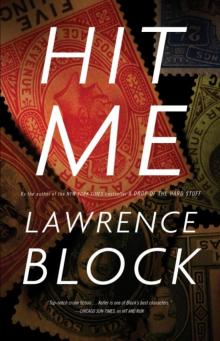 Hit and Run
Hit and Run Hope to Die
Hope to Die Two For Tanner
Two For Tanner Tanners Virgin
Tanners Virgin Dead Girl Blues
Dead Girl Blues One Night Stands and Lost Weekends
One Night Stands and Lost Weekends A Drop of the Hard Stuff
A Drop of the Hard Stuff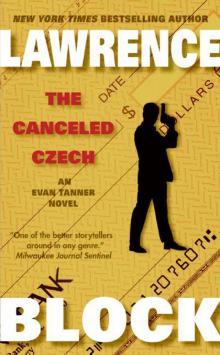 The Canceled Czech
The Canceled Czech Even the Wicked
Even the Wicked Me Tanner, You Jane
Me Tanner, You Jane Quotidian Keller
Quotidian Keller Small Town
Small Town Tanners Tiger
Tanners Tiger A Walk Among the Tombstones
A Walk Among the Tombstones Tanners Twelve Swingers
Tanners Twelve Swingers Gym Rat & the Murder Club
Gym Rat & the Murder Club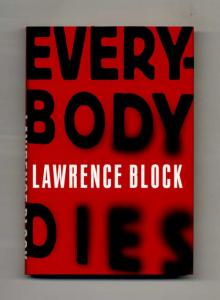 Everybody Dies
Everybody Dies The Thief Who Couldnt Sleep
The Thief Who Couldnt Sleep Hit Parade
Hit Parade The Devil Knows Youre Dead
The Devil Knows Youre Dead The Burglar in Short Order
The Burglar in Short Order A Long Line of Dead Men
A Long Line of Dead Men Keller's Homecoming
Keller's Homecoming Resume Speed
Resume Speed Keller's Adjustment
Keller's Adjustment Eight Million Ways to Die
Eight Million Ways to Die Time to Murder and Create
Time to Murder and Create Out on the Cutting Edge
Out on the Cutting Edge A Dance at the Slaughter House
A Dance at the Slaughter House In the Midst of Death
In the Midst of Death When the Sacred Ginmill Closes
When the Sacred Ginmill Closes You Could Call It Murder
You Could Call It Murder Keller on the Spot
Keller on the Spot A Ticket to the Boneyard
A Ticket to the Boneyard A Time to Scatter Stones
A Time to Scatter Stones Keller's Designated Hitter
Keller's Designated Hitter A Stab in the Dark
A Stab in the Dark Sins of the Fathers
Sins of the Fathers The Burglar in the Closet
The Burglar in the Closet Burglar Who Dropped In On Elvis
Burglar Who Dropped In On Elvis The Burglar Who Painted Like Mondrian
The Burglar Who Painted Like Mondrian The Girl With the Long Green Heart
The Girl With the Long Green Heart The Burglar Who Counted the Spoons (Bernie Rhodenbarr)
The Burglar Who Counted the Spoons (Bernie Rhodenbarr) Burglar Who Smelled Smoke
Burglar Who Smelled Smoke Rude Awakening (Kit Tolliver #2) (The Kit Tolliver Stories)
Rude Awakening (Kit Tolliver #2) (The Kit Tolliver Stories) Don't Get in the Car (Kit Tolliver #9) (The Kit Tolliver Stories)
Don't Get in the Car (Kit Tolliver #9) (The Kit Tolliver Stories) CH04 - The Topless Tulip Caper
CH04 - The Topless Tulip Caper You Can Call Me Lucky (Kit Tolliver #3) (The Kit Tolliver Stories)
You Can Call Me Lucky (Kit Tolliver #3) (The Kit Tolliver Stories) CH02 - Chip Harrison Scores Again
CH02 - Chip Harrison Scores Again Strangers on a Handball Court
Strangers on a Handball Court Cleveland in My Dreams
Cleveland in My Dreams Clean Slate (Kit Tolliver #4) (The Kit Tolliver Stories)
Clean Slate (Kit Tolliver #4) (The Kit Tolliver Stories) The Burglar Who Traded Ted Williams
The Burglar Who Traded Ted Williams Burglar on the Prowl
Burglar on the Prowl In For a Penny (A Story From the Dark Side)
In For a Penny (A Story From the Dark Side) Catch and Release Paperback
Catch and Release Paperback Ride A White Horse
Ride A White Horse No Score
No Score Looking for David (A Matthew Scudder Story Book 7)
Looking for David (A Matthew Scudder Story Book 7)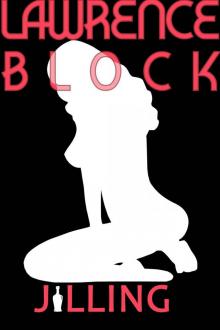 Jilling (Kit Tolliver #6) (The Kit Tolliver Stories)
Jilling (Kit Tolliver #6) (The Kit Tolliver Stories) Ariel
Ariel Enough Rope
Enough Rope Grifter's Game
Grifter's Game Canceled Czech
Canceled Czech Unfinished Business (Kit Tolliver #12) (The Kit Tolliver Stories)
Unfinished Business (Kit Tolliver #12) (The Kit Tolliver Stories) Thirty
Thirty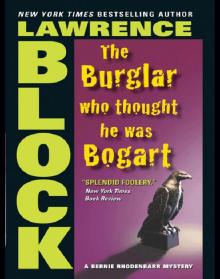 The Burglar Who Thought He Was Bogart
The Burglar Who Thought He Was Bogart Make Out with Murder
Make Out with Murder One Last Night at Grogan's (A Matthew Scudder Story Book 11)
One Last Night at Grogan's (A Matthew Scudder Story Book 11) The Burglar on the Prowl
The Burglar on the Prowl Welcome to the Real World (A Story From the Dark Side)
Welcome to the Real World (A Story From the Dark Side) Keller 05 - Hit Me
Keller 05 - Hit Me Walk Among the Tombstones: A Matthew Scudder Crime Novel
Walk Among the Tombstones: A Matthew Scudder Crime Novel Ronald Rabbit Is a Dirty Old Man
Ronald Rabbit Is a Dirty Old Man The Burglar Who Studied Spinoza
The Burglar Who Studied Spinoza The Burglar Who Liked to Quote Kipling
The Burglar Who Liked to Quote Kipling Keller in Des Moines
Keller in Des Moines Hit List
Hit List The Dettweiler Solution
The Dettweiler Solution HCC 115 - Borderline
HCC 115 - Borderline A Drop of the Hard Stuff: A Matthew Scudder Novel
A Drop of the Hard Stuff: A Matthew Scudder Novel Step by Step
Step by Step The Girl With the Deep Blue Eyes
The Girl With the Deep Blue Eyes If You Can't Stand the Heat (Kit Tolliver #1) (The Kit Tolliver Stories)
If You Can't Stand the Heat (Kit Tolliver #1) (The Kit Tolliver Stories) The Topless Tulip Caper
The Topless Tulip Caper Dolly's Trash & Treasures (A Story From the Dark Side)
Dolly's Trash & Treasures (A Story From the Dark Side) The Triumph of Evil
The Triumph of Evil Fun with Brady and Angelica (Kit Tolliver #10 (The Kit Tolliver Stories)
Fun with Brady and Angelica (Kit Tolliver #10 (The Kit Tolliver Stories) Burglars Can't Be Choosers
Burglars Can't Be Choosers Who Knows Where It Goes (A Story From the Dark Side)
Who Knows Where It Goes (A Story From the Dark Side) Deadly Honeymoon
Deadly Honeymoon Like a Bone in the Throat (A Story From the Dark Side)
Like a Bone in the Throat (A Story From the Dark Side) A Chance to Get Even (A Story From the Dark Side)
A Chance to Get Even (A Story From the Dark Side) The Boy Who Disappeared Clouds
The Boy Who Disappeared Clouds Collecting Ackermans
Collecting Ackermans Waitress Wanted (Kit Tolliver #5) (The Kit Tolliver Stories)
Waitress Wanted (Kit Tolliver #5) (The Kit Tolliver Stories) One Thousand Dollars a Word
One Thousand Dollars a Word Even the Wicked: A Matthew Scudder Novel (Matthew Scudder Mysteries)
Even the Wicked: A Matthew Scudder Novel (Matthew Scudder Mysteries) Hit Man
Hit Man The Night and The Music
The Night and The Music Ehrengraf for the Defense
Ehrengraf for the Defense The Merciful Angel of Death (A Matthew Scudder Story Book 5)
The Merciful Angel of Death (A Matthew Scudder Story Book 5) The Burglar in the Rye
The Burglar in the Rye I Know How to Pick 'Em
I Know How to Pick 'Em Getting Off hcc-69
Getting Off hcc-69 Three in the Side Pocket (A Story From the Dark Side)
Three in the Side Pocket (A Story From the Dark Side)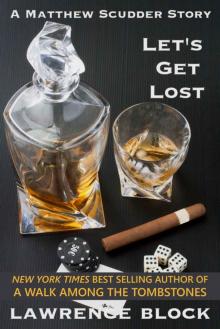 Let's Get Lost (A Matthew Scudder Story Book 8)
Let's Get Lost (A Matthew Scudder Story Book 8) Strange Are the Ways of Love
Strange Are the Ways of Love MOSTLY MURDER: Till Death: a mystery anthology
MOSTLY MURDER: Till Death: a mystery anthology Masters of Noir: Volume Four
Masters of Noir: Volume Four A Week as Andrea Benstock
A Week as Andrea Benstock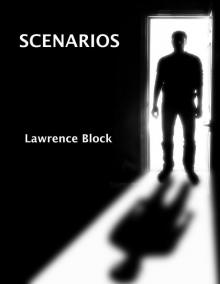 Scenarios (A Stoiry From the Dark Side)
Scenarios (A Stoiry From the Dark Side) The Sex Therapists: What They Can Do and How They Do It (John Warren Wells on Sexual Behavior Book 15)
The Sex Therapists: What They Can Do and How They Do It (John Warren Wells on Sexual Behavior Book 15)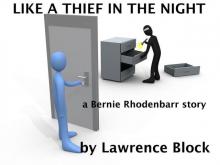 Like a Thief in the Night: a Bernie Rhodenbarr story
Like a Thief in the Night: a Bernie Rhodenbarr story A Diet of Treacle
A Diet of Treacle Community of Women
Community of Women Different Strokes: How I (Gulp!) Wrote, Directed, and Starred in an X-rated Movie (John Warren Wells on Sexual Behavior)
Different Strokes: How I (Gulp!) Wrote, Directed, and Starred in an X-rated Movie (John Warren Wells on Sexual Behavior) You Don't Even Feel It (A Story From the Dark Side)
You Don't Even Feel It (A Story From the Dark Side) Zeroing In (Kit Tolliver #11) (The Kit Tolliver Stories)
Zeroing In (Kit Tolliver #11) (The Kit Tolliver Stories) The Wife-Swap Report (John Warren Wells on Sexual Behavior)
The Wife-Swap Report (John Warren Wells on Sexual Behavior) Keller's Fedora (Kindle Single)
Keller's Fedora (Kindle Single) Speaking of Lust
Speaking of Lust Everybody Dies (Matthew Scudder)
Everybody Dies (Matthew Scudder) Defender of the Innocent: The Casebook of Martin Ehrengraf
Defender of the Innocent: The Casebook of Martin Ehrengraf After the First Death
After the First Death Writing the Novel
Writing the Novel How Far - a one-act stage play
How Far - a one-act stage play Chip Harrison Scores Again
Chip Harrison Scores Again The Topless Tulip Caper ch-4
The Topless Tulip Caper ch-4 The Crime of Our Lives
The Crime of Our Lives Killing Castro
Killing Castro The Trouble with Eden
The Trouble with Eden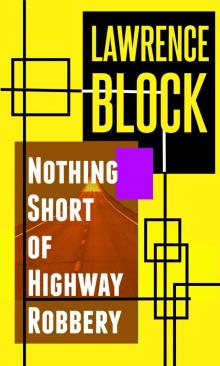 Nothing Short of Highway Robbery
Nothing Short of Highway Robbery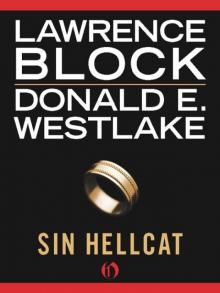 Sin Hellcat
Sin Hellcat Getting Off: A Novel of Sex & Violence (Hard Case Crime)
Getting Off: A Novel of Sex & Violence (Hard Case Crime) Coward's Kiss
Coward's Kiss Alive in Shape and Color
Alive in Shape and Color Blow for Freedom
Blow for Freedom The New Sexual Underground: Crossing the Last Boundaries (John Warren Wells on Sexual Behavior Book 10)
The New Sexual Underground: Crossing the Last Boundaries (John Warren Wells on Sexual Behavior Book 10) April North
April North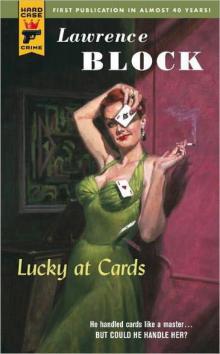 Lucky at Cards
Lucky at Cards One Night Stands; Lost weekends
One Night Stands; Lost weekends Sweet Little Hands (A Story From the Dark Side)
Sweet Little Hands (A Story From the Dark Side) Blood on Their Hands
Blood on Their Hands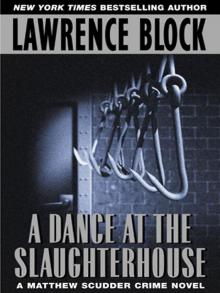 A Dance at the Slaughterhouse
A Dance at the Slaughterhouse Headaches and Bad Dreams (A Story From the Dark Side)
Headaches and Bad Dreams (A Story From the Dark Side) Keller's Therapy
Keller's Therapy The Specialists
The Specialists Hit and Run jk-4
Hit and Run jk-4 Threesome
Threesome Love at a Tender Age (John Warren Wells on Sexual Behavior)
Love at a Tender Age (John Warren Wells on Sexual Behavior) The Devil Knows You're Dead: A MATTHEW SCUDDER CRIME NOVEL
The Devil Knows You're Dead: A MATTHEW SCUDDER CRIME NOVEL Funny You Should Ask
Funny You Should Ask CH01 - No Score
CH01 - No Score Sex and the Stewardess (John Warren Wells on Sexual Behavior)
Sex and the Stewardess (John Warren Wells on Sexual Behavior) A Madwoman's Diary
A Madwoman's Diary When This Man Dies
When This Man Dies Sinner Man
Sinner Man Such Men Are Dangerous
Such Men Are Dangerous A Strange Kind of Love
A Strange Kind of Love Enough of Sorrow
Enough of Sorrow 69 Barrow Street
69 Barrow Street A Moment of Wrong Thinking (Matthew Scudder Mysteries Series Book 9)
A Moment of Wrong Thinking (Matthew Scudder Mysteries Series Book 9) Eight Million Ways to Die ms-5
Eight Million Ways to Die ms-5 Warm and Willing
Warm and Willing Mona
Mona In Sunlight or In Shadow
In Sunlight or In Shadow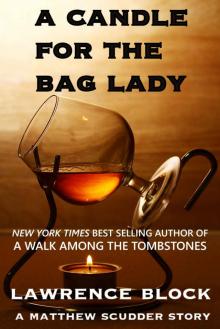 A Candle for the Bag Lady (Matthew Scudder Book 2)
A Candle for the Bag Lady (Matthew Scudder Book 2) Conjugal Rites (Kit Tolliver #7) (The Kit Tolliver Stories)
Conjugal Rites (Kit Tolliver #7) (The Kit Tolliver Stories) Speaking of Lust - the novella
Speaking of Lust - the novella Gigolo Johnny Wells
Gigolo Johnny Wells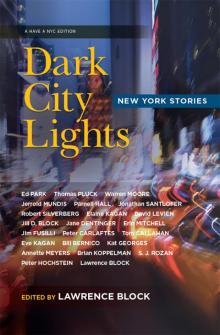 Dark City Lights
Dark City Lights Versatile Ladies: the bisexual option (John Warren Wells on Sexual Behavior)
Versatile Ladies: the bisexual option (John Warren Wells on Sexual Behavior) Passport to Peril
Passport to Peril The Taboo Breakers: Shock Troops of the Sexual Revolution (John Warren Wells on Sexual Behavior)
The Taboo Breakers: Shock Troops of the Sexual Revolution (John Warren Wells on Sexual Behavior) Lucky at Cards hcc-28
Lucky at Cards hcc-28 Campus Tramp
Campus Tramp 3 is Not a Crowd (John Warren Wells on Sexual Behavior)
3 is Not a Crowd (John Warren Wells on Sexual Behavior)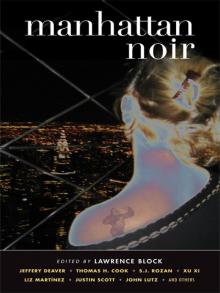 Manhattan Noir
Manhattan Noir The Burglar in the Library
The Burglar in the Library Doing It! - Going Beyond the Sexual Revolution (John Warren Wells on Sexual Behavior Book 13)
Doing It! - Going Beyond the Sexual Revolution (John Warren Wells on Sexual Behavior Book 13) So Willing
So Willing The Burglar Who Traded Ted Williams br-6
The Burglar Who Traded Ted Williams br-6 Candy
Candy Sex Without Strings: A Handbook for Consenting Adults (John Warren Wells on Sexual Behavior)
Sex Without Strings: A Handbook for Consenting Adults (John Warren Wells on Sexual Behavior) The Devil Knows You're Dead: A MATTHEW SCUDDER CRIME NOVEL (Matthew Scudder Mysteries)
The Devil Knows You're Dead: A MATTHEW SCUDDER CRIME NOVEL (Matthew Scudder Mysteries) Manhattan Noir 2
Manhattan Noir 2 The Scoreless Thai (aka Two For Tanner)
The Scoreless Thai (aka Two For Tanner)